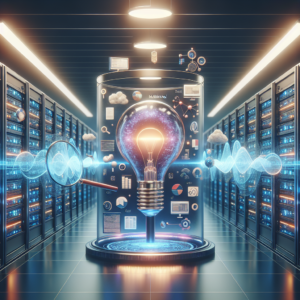What if I told you that our world is on the brink of an energy revolution? With the pressing challenge of climate change and the growing demand for clean energy, the innovations in renewable energy technology are paving the way toward a sustainable future. Here’s a closer look at some of these exciting advancements that are reshaping how we generate and consume power.
Understanding Renewable Energy
Renewable energy refers to energy derived from natural sources that are replenished constantly, such as sunlight, wind, rain, tides, waves, and geothermal heat. Unlike fossil fuels, which can take millions of years to form and contribute significantly to greenhouse gas emissions, renewables provide a cleaner and more sustainable solution. As I look around today, it’s fascinating to see how these energy sources are becoming more efficient and accessible.
Solar Energy
Solar power is often at the forefront of renewable energy discussions. It harnesses sunlight using photovoltaic (PV) cells to generate electricity. Over the years, there have been significant advancements in solar technology, making it more efficient and affordable.
Bifacial Solar Panels
I find bifacial solar panels particularly interesting. Unlike traditional panels that capture sunlight from only one side, bifacial panels can capture light from both sides. This dual capability means they can generate more electricity, particularly in environments where light is reflected off surfaces like snow or sand. According to recent studies, these panels can increase energy output by up to 30% in the right conditions.
Floating Solar Farms
Another innovation that has caught my attention is the development of floating solar farms. These solar installations are placed on bodies of water instead of land, which conserves valuable land space for agriculture or conservation. Additionally, the cooling effect of water can enhance the efficiency of the solar panels. I think it’s a brilliant way to utilize otherwise unused surfaces while benefiting from the natural cooling effects.
Wind Energy
Wind energy is another key player in the renewable sector. By using wind turbines to convert wind flow into electricity, this method has rapidly gained traction.
Vertical Axis Wind Turbines
I’ve been intrigued by vertical axis wind turbines (VAWTs), which differ from the more common horizontal axis turbines. VAWTs are capable of capturing wind from any direction, which can be particularly useful in urban settings where wind patterns are unpredictable. Their compact design also makes them easier to install and maintain in smaller areas.
Innovations in Turbine Efficiency
The efficiency of wind turbines continues to improve. With advancements in blade design and materials, turbines are now able to capture more wind energy even in low wind conditions. This means that less infrastructure is required to produce the same amount of energy, which is great for reducing costs and carbon footprints.
Geothermal Energy
Geothermal energy harnesses heat from the Earth’s interior to generate electricity or provide direct heating. This constant and reliable source of energy often gets less attention, but it has great potential.
Enhanced Geothermal Systems (EGS)
One of the most exciting advances in this field is the development of Enhanced Geothermal Systems (EGS). EGS involves injecting water into hot rock formations deep underground, which then heats the water. This hot water can be brought back to the surface to generate steam and produce electricity. I find it fascinating how this technology allows us to tap into geothermal sources that were previously considered unusable.
Hydropower
Hydropower has long been a reliable source of renewable energy. It uses the flow of water to turn turbines and generate electricity. That being said, innovations are revolutionizing this sector as well.
Micro-hydropower Systems
For instance, micro-hydropower systems are becoming increasingly popular, especially in remote or rural areas. These systems generate power from small water flows and can be installed with minimal environmental impact. I believe they are a fantastic solution for communities seeking sustainable energy without the need for large dams.
Biomass Energy
Biomass energy is derived from organic materials, such as plant and animal waste, and can be converted into biofuels. The advancements in this field are turning what would be waste into valuable energy resources.
Algae-Based Biofuels
One of the most exciting perspectives in biomass energy is the development of algae-based biofuels. Algae can produce oils that can be converted into biodiesel or other fuels, and they can grow in a variety of environments, requiring far less land and resources than traditional crops. I feel that if we can effectively harness algae energy, it could be a game-changer in our transition away from fossil fuels.
Energy Storage Innovations
As I reflect on renewable energy, it becomes clear that one of the critical challenges we face is energy storage. Given that sources like solar and wind are intermittent, efficient storage solutions are vital.
Lithium-Ion Battery Advances
I’ve followed the evolution of lithium-ion batteries with great interest. Improvements in battery technology have significantly increased energy density and reduced charging times. Enhanced chemical formulations also lessen the environmental impact associated with battery production. I can see a future where electric vehicles and renewable energy systems use these advanced batteries for longer durations and faster replenishment.
Solid-State Batteries
Solid-state batteries are another exciting innovation. Unlike conventional batteries that use liquid electrolytes, solid-state batteries utilize solid electrolytes, which can improve safety and energy density. As we look for smarter ways to store energy, solid-state technology could be a key player in the future of both personal electronics and renewable energy storage.
Smart Grid Technology
As the integration of renewable energy sources grows, so does the need for smarter infrastructure to manage energy distribution.
The Role of Smart Meters
Smart meters are revolutionizing how we consume and monitor energy. I’ve seen firsthand how they provide real-time data on energy usage, allowing consumers to make informed decisions and reduce consumption. They can also help utilities manage supply and demand more effectively, minimizing waste and optimizing energy distribution.
Distributed Energy Resources (DER)
The rise of Distributed Energy Resources is another trend that excites me. DER includes small-scale energy sources, such as rooftop solar panels or small wind turbines, which can be integrated into the existing grid. By enabling consumers to generate their own energy, we can create a more resilient and efficient energy system.
Policy Innovations Supporting Renewables
As I reflect on these technological advancements, it’s clear that effective policy frameworks are needed to support the transition to renewable energy.
Renewable Energy Incentives
Many governments have introduced incentives to encourage the adoption of renewable energy technologies. These can range from tax credits and rebates for solar installations to feed-in tariffs that guarantee a price for renewable energy fed into the grid. I believe that these types of policies are critical in driving the adoption of clean energy solutions.
International Agreements
On a larger scale, international agreements, such as the Paris Agreement, are pivotal. They provide a framework for countries to set emissions reduction targets and collaborate on technology sharing and innovations in energy. I find it inspiring how nations are coming together to address climate change, recognizing that the energy challenge is not confined by borders.
The Future of Renewable Energy Tech
Looking ahead, it’s hard not to feel optimistic about the future of renewable energy technology. With continuous innovations, the dream of a clean, sustainable energy future feels within reach.
Continued Research and Development
I foresee that ongoing research and development will bring even more breakthroughs. As emerging technologies such as artificial intelligence and machine learning are integrated into energy systems, we can optimize energy management, storage, and distribution in ways previously thought impossible.
Increased Public Engagement
Furthermore, public engagement will play a crucial role. As awareness of climate issues grows, I believe more people will prioritize sustainable practices, demanding better technologies and energy sources. Communities striving for green solutions will inevitably shape the market and drive innovation.
Conclusion
The innovations in renewable energy technology represent hope and promise for a sustainable future. From solar and wind to geothermal and biomass, each sector is witnessing advancements that enhance efficiency and reduce costs. As I reflect on the possibilities, I get excited about the immense potential of these technologies to combat climate change and empower communities worldwide.
By embracing these innovations, we can work toward a cleaner, greener planet. It’s an inspiring journey, and I’m eager to see what the future holds for renewable energy technology!






